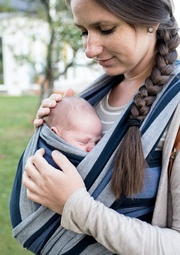Can You Be Held Liable If Your Kids Download Pirated Content?
Navigating the digital universe cab be a treacherous journey, especially when it involves curious kids and pirated content. As a parent, your concern doesn’t just revolve around potential malware or inappropriate content. The virtual landscape brings its own share of legal issues, which could directly impact you as well.
In this informative piece, we’ll help you understand pirated content and whether you can be held liable if your kids download it.
Understanding Pirated Content
Pirated content refers to unauthorized reproductions or uses of copyrighted works, which can range from music and movies to software and written works. When this material is downloaded illegally, it infringes on the rights of the content creators or owners.
The first step towards understanding if you can be held liable for your kids’ actions starts here. Knowing what constitutes pirated content can help you to identify and discourage such activities in your home.
It also sets a foundation for teaching your children about respect for intellectual property rights. That way, it becomes easier to avoid potential legal issues that can come from downloading pirated material.
Factors Determining Liability for Downloaded Pirated Content
Besides understanding pirated content, it is equally important to recognize the various factors that might affect parental liability when kids download this content. Oftentimes, the factors determining liability hinge upon your geographical location and the nature of the content downloaded.
Certain jurisdictions have stringent laws that may hold parents responsible for their children’s illicit online activities. Additionally, different content owners have varied stances toward piracy, some being more aggressive in chasing infringements than others.
Being aware of these variables helps you understand your level of risk and offers insight into specific preventative measures suitable for your family. Moreover, it equips you with adequate knowledge to teach your kids about repercussions and the importance of respecting intellectual property rights, thereby reducing any propensity toward downloading pirated material.
Preventive Measures Against Downloading Pirated Content
Knowledge of pirated content and the factors determining liability set the stage for implementing effective preventive measures. Central to this is educating your children about types of legal and illegal content, along with potential consequences.
To add an extra layer of control, consider installing parental control software tools to monitor your kids’ online activity. These solutions allow the restriction of specific sites known for sharing pirated content, intensifying your efforts to uphold legal media consumption.
Furthermore, promoting legal alternatives can help dissuade interest in piracy. Many platforms, like Spotify, Netflix, or Hulu, offer affordable and extensive libraries that encourage legal downloads or streaming, reducing the temptation to resort to pirated sources.
As a parent, modeling correct digital behaviors sets an example for children. So, always be conscious of your online actions. It’s not just about evading liability; it’s primarily about teaching honesty, respect for others’ work, and fostering ethical online habits among children.
Personal Liability and Consequences for Kids’ Piracy Actions

The ripple effects of your child downloading pirated content unfairly bypass the income due to the creators of that material, which can result in serious legal repercussions.
Yes, as a parent, you could indeed face liability for this act in several jurisdictions. The ramifications may range from fines and warnings to court cases based on particular local laws and the nature of the content involved.
In serving as a gateway to your children’s online activities, it becomes essential to always perform due diligence when suspecting any downloaded or streamed content is pirated. Also, seek professional advice from IP experts, such as Heer Law, whenever necessary, as ignorance doesn’t absolve one from liabilities.
Moreover, emphasize consequences beyond legality, such as ethical implications and potential risks of malware or viruses often associated with pirated materials. It not only strengthens their understanding of copyright respect but also impacts their decision-making towards responsible internet usage.
Moral Responsibilities When It Comes to Pirated Content
Aside from the legal repercussions, your moral responsibilities also come into play when dealing with pirated content. As parents and role models in the digital age, we have the obligation to teach our children about respect for creators’ rights.
Downloading or streaming pirated content not only undermines these rights but it also robs artists, writers, filmmakers, and others of their due rewards for hard work. That means we inadvertently demonstrate to our children that it’s acceptable to undervalue people’s creative efforts when we take advantage of pirated materials.
Conveying the importance of honesty and respect in all endeavors is a crucial part of raising ethically-conscious citizens. Encouraging kids to compensate creators by using legitimate avenues for purchasing or accessing media helps instill in them an appreciation for intellectual property. Remember, values learned early on heavily influence their decision-making skills online and offline.









